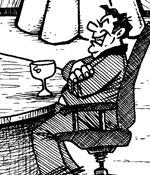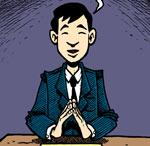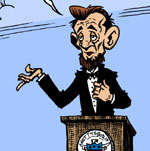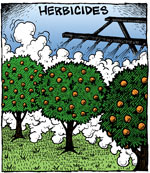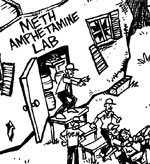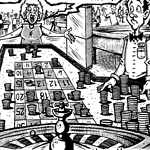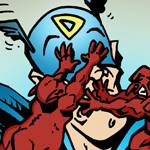Insomnia in Children - Crying Babies Are Not the Only Children Who Have Insomnia
| Share on Facebook | Share on Twitter | Share on Google+ |
The mental picture of a crying baby keeping new parents up at all hours of the night is what springs to mind when most of us are asked about insomnia in children. The fact is, however, that older children and teens can also suffer sleep deprivation, and insomnia can greatly reduce their enjoyment of life, their social adjustment, and performance in school.
The most important telltale sign of insomnia in children is sleepiness during the day. But other symptoms of childhood insomnia include:
- Aggressiveness
- Attention deficit
- Hyperactivity
- Mood Swings
- Memory Problems
The most common cause of insomnia in children is not getting to bed on time. Children between the ages of 5 and 13 need ten or eleven hours of sleep each night. Teens need nine hours of sleep each night. Many kids are over - scheduled, participating in too many activities, and have too much homework. Others spend too much time with wii, DVDs, TV, and on the phone.
There's actually a medical term for not getting enough sleep because of spending too much time watching TV or playing video games or indulging in similar activities, insufficient sleep syndrome. Children who simply refuse to go to sleep when they are told may suffer limit-setting disorder.But insomnia in children can have many other causes.
Idiopathic or primary insomnia is a condition that begins at birth and continues through life. Probably caused by a gene affecting the creation of hormones that control the brain's cycles of sleep and wakefulness, most children who have primary insomnia adjust their lifestyles to limited sleep. Medical treatment usually is not required.
Obstructive sleep apnea is a condition in which breathing is interrupted hundreds of times during the night, each causing a few seconds interruption to sleep. Children who have this condition may not snore like adults, but they still have disturbed sleep. Chronic tonsillitis can also cause obstructive sleep apnea.
Restless legs syndrome and its nighttime-only variation period limb movement during sleep fragment sleep and can cause symptoms that appear to be attention deficit disorder or attention deficit hyperactivity disorder, only they are actually due to sleep deprivation. Inattention, hyperactivity, and mood swings are common with these sleep problems.
Circadian sleep disorders result from changes in schedule, such as the beginning of the new school year. Some children take an unusually long time to adjust to interruption in sleep. Jet lag, which affects children as well as adults, is also a circadian sleep disorder.
Nightmares usually reflect unresolved anxiety. Night terrors, on the other hand, are due to overactivity of the brain during the first third of sleep.
Physical illnesses, such as allergies, colds, flu, and sports injuries all can interfere with sleep. When the underlying physical illness is treated, insomnia also resolves.
One of the most difficult aspects of insomnia or sleep deprivation in teens is underestimating the need for "catchup" sleep. A teen who misses 10 hours of sleep during the week has a physiological need to spend the entire weekend sleeping. Sleep deficits are cumulative and demand "interest" on the sleep debt to bring back normal mood and intellectual functioning.
What can parents do about the various causes of children's insomnia? When the problem is limit-setting, parents may try:
- Extinction, ignoring children's protests about going to bed.
- Positive reinforcement, establishing a pleasant nighttime routine, such as reading a story, which is interrupted if the child throws a tantrum.
- Interruption, making sure the child is awake for bedtime, to set the hours for going to bed and getting up at the same time each day.
What can parents do about nightmares and night terrors? Nightmares can be talked out to relieve the underlying anxiety. Night terrors are less likely when dinner includes a porridge, such as cream of rice or cream of wheat. The treatment for night terrors in traditional Chinese medicine is to serve cream of rice with jujubes.
Circadian sleep disorders, such as adjusting to school times, can be dealt with by changing the bedtime schedule by 15 minutes a night until sleep schedules and school schedules match.
Other kinds of childhood insomnia require working with a doctor to resolve underlying health issues. Always avoid medication unless absolutely necessary to help your child get normal sleep.
-
Skin CareMen Skin Care
-
Free ResourcesFree eBooks
-
Health is not simply the absence of sickness.Hannah Green
-
Featured Health Supplement
 If you find a product that is as effective as Total Balance, and is better value for money, let us know and we will give you a refund equivalent to your entire purchases of Total Balance…retrospective.
If you find a product that is as effective as Total Balance, and is better value for money, let us know and we will give you a refund equivalent to your entire purchases of Total Balance…retrospective.
-


